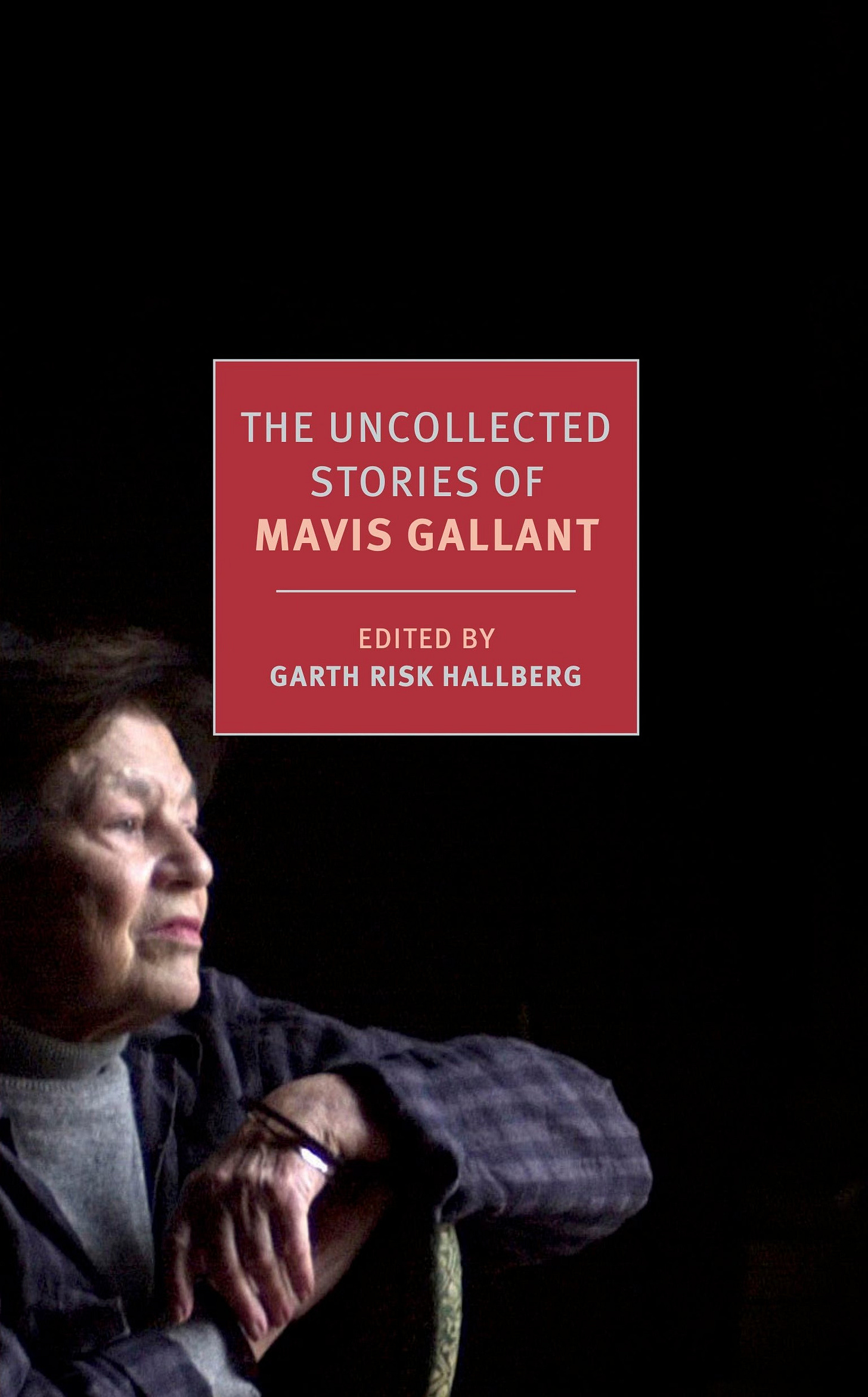Review: Cynthia Zarin on Mavis Gallant
Mavis Gallant’s stories—intricate, vivid, often hallucinatory—are series of mirrored prisms; each facet catches the light but throws it aslant
“Send Me a Story!”
One of the most disconcerting things about being alive is discovering that what you thought mattered doesn’t—something else does. Mavis Gallant’s stories—intricate, vivid, often hallucinatory—are series of mirrored prisms; each facet catches the light but throws it aslant, on the floor, the ceiling, the back of a hand, a tremor at first inconsequential, but by the end, almost always, a searing and fatal illumination.
Gallant’s own story is equally involute. She was born in Montreal in 1922, her father died when she was ten. Afterwards, Mavis was shuttled between relatives and guardians, attending upwards of fifteen schools. She spent her late adolescence in New York City. There was a brief marriage (Gallant is her married name; she was born Mavis Leslie de Trafford Young), a stint as a reporter for a Montreal newspaper (the subject of her Linnet Muir stories). At twenty-eight, she quit her job and moved to Paris, with the intention of writing short stories. A friend said she was like an architect who had never built a garage, but the charge wasn’t entirely true—at eighteen, she’d already written the preternaturally astute and devastating “Thank You for the Lovely Tea” (though it was not published until 1956), and a few stories had been published in Canadian magazines. Already the characteristic Gallant notes are striking: the shifting point of view, the offhand, blistering denouement, and, above all, the slightly estranged and estranging position of a person in transit, without intimate connections. “I would like,” she wrote in a 1954 diary, “to be as anonymous as a stone or a tree.” Arriving in Paris, she famously sent three stories to The New Yorker. While none of these was published, she embarked on a relationship with the magazine, first with the editor Mildred Wood, and then with William Maxwell, The New Yorker’s legendary fiction editor. By 1963 he wrote to her, “Make me happy. Send me a story.” Over four decades, she would publish 116 stories in the magazine.
Keep reading with a 7-day free trial
Subscribe to Book Post to keep reading this post and get 7 days of free access to the full post archives.



